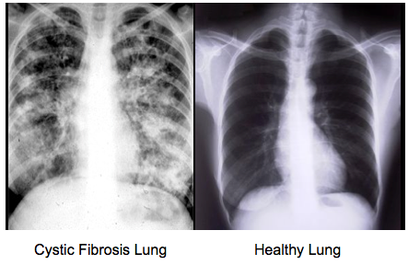One year of gene therapy treatment for cystic fibrosis resulted in 3.7% improvement and stabilization of the disease compared to a placebo group. Cystic fibrosis affects about 70,000 people worldwide. Mutations in a single gene – CFTR – cause problems around the body, but particularly in the lungs. People with cystic fibrosis produce thick, sticky mucus, which clogs up the organ and makes it a breeding ground for harmful bacteria.
Over the course of the year, the lung function of people in the treatment group seemed to stabilise, while the control group showed a steady decline in lung power.
The lungs of people with cystic fibrosis typically get worse at a rate of about 2 to 3 per cent a year, and Rayner says that a small change to this rate of decline could mean the difference between needing a lung transplant at the age of 60 instead of 40. “That is a big deal – it could mean a very different kind of life for them and those around them,” he says.
Now we’ve worked out how to get genes into the lungs, similar techniques could be used to tackle other genetic lung diseases, says Gill, or even to start using the lungs to produce therapeutic proteins for other health problems.
“One application would be to express antibodies in the lung against respiratory viruses such as flu, or we could secrete anti-inflammatory proteins from the lung into the blood to treat conditions such as rheumatoid arthritis,” Gill says.
She says her team has some preliminary data showing that techniques like this could work, potentially allowing us to take advantage of the lungs’ position at the centre of our circulatory system for their delivery. “We are just beginning to think about how to take these ideas forward,” says Gill.
Cystic fibrosis lungs on the left and healthy lungs on the right
SOURCES – New Scientist, The Lancet Respiratory Medicine

Brian Wang is a Futurist Thought Leader and a popular Science blogger with 1 million readers per month. His blog Nextbigfuture.com is ranked #1 Science News Blog. It covers many disruptive technology and trends including Space, Robotics, Artificial Intelligence, Medicine, Anti-aging Biotechnology, and Nanotechnology.
Known for identifying cutting edge technologies, he is currently a Co-Founder of a startup and fundraiser for high potential early-stage companies. He is the Head of Research for Allocations for deep technology investments and an Angel Investor at Space Angels.
A frequent speaker at corporations, he has been a TEDx speaker, a Singularity University speaker and guest at numerous interviews for radio and podcasts. He is open to public speaking and advising engagements.


